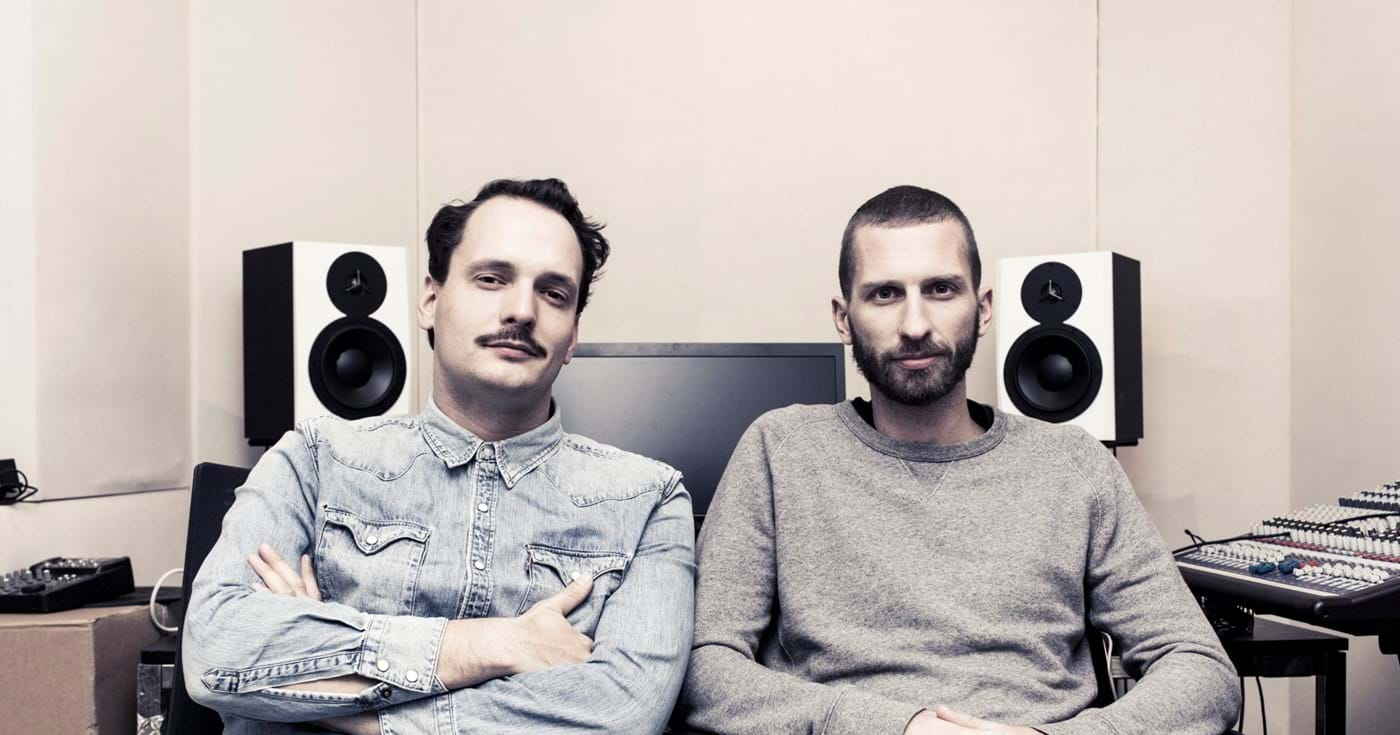Getting into Music. And Getting Serious!
If you’re not already familiar with the Dutch duo, the masterminds behind Detroit Swindle are Lars Dales and Maarten Smeets. While they didn’t grow up together and only released their debut EP Starvin’ in 2012, they share a common love for and inspiration from old-school music from the Motown era, as well as Funk, Hip Hop and Jazz. And ever since that first release, they have kept producing tracks together to be pressed on vinyl as well as for live shows.
One of the first things we wanted to learn a bit more about was the duo's background with regard to music. “I have been DJ’ing for as long as I can remember and also had fun messing around with software like Reason and Hammerhead, mostly creating breakbeats, but I had not released anything before Detroit Swindle got going,” says Lars. “In the beginning I was DJ’ing Hip Hop – all vinyl stuff – and there is just something about that 90’s Hip Hop era that I still love. I mean, there are some great new Hip Hop producers around as well – like Kendrick Lamar or Danger Mouse (Brian Joseph Burton, ed.) – but then you also want to dig deeper and understand more about where all of those cool samples they use are coming from. And then you enter the very cool eras of Disco and Soul and Funk.”
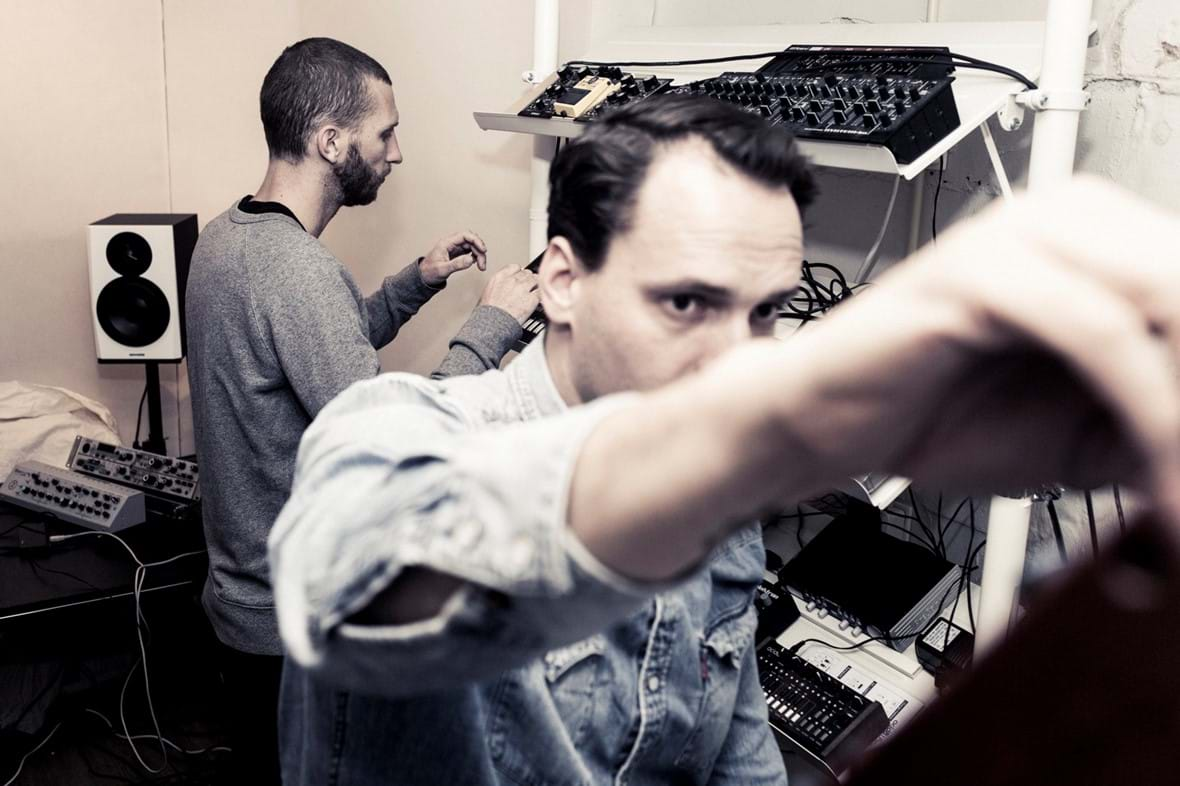
I grew up on Motown, and I still dig that music a lot.
Maarten Smeets, Detroit Swindle
“Well, I got started playing the drums in a high school band. It wasn’t really a good band, but it was good fun, though,” adds Maarten. “And further, my dad was the biggest Otis Redding fan ever. So I basically grew up on Motown, and I still dig that music a lot. Today, however, I mostly like to investigate and discover rare stuff from that era. You know, I read up on stuff and search for tiny labels from the 60’s and 70’s that may have released just a few tracks and then went belly-up. I love finding rare stuff that no one knows about but has that certain musical vibe. I should probably add that this ‘traditional’ background doesn’t mean that I picked up a lot of knowledge or theory about chords, harmony and scales. I know a little bit, but most of the time we just mess around to find the right harmonies and most of the time we end up where we want to be.”
Did you know that Studio Master, Roman Flügel, also started as a drummer in a school band?
So far so good, but was it ever a dream or even a goal to become professional producers?
“No, not to me,” says Maarten. “In fact, I never really had a dream to become anything specific. I have mostly just enjoyed whatever it was that I was doing at any given time. But having said that and now that I am here, I find that I am enjoying myself so much that it is actually hard not to think of it as if a dream has come true. It’s really something special that I get to do this every day – and I appreciate that every day.”
“I was always into music and come from a musical family, but never had the patience to really learn how to play an instrument,” adds Lars. “So, I got into DJ’ing at a very early point and have done that professionally since I was around 20, so I just kind of got into it without planning to in advance.”
When we realize that we're tweaking just for the sake of tweaking, then the track is done. Oh, and a deadline also helps!
Lars Dales, Detroit Swindle
Related to that question, we asked Lars and Maarten if there was a certain point at which they realized that Detroit Swindle was no longer just a hobby project, but something that would require their full attention.
”In the beginning, I was working as a creative in the advertising industry 3 days a week and virtually spent all vacations touring with Lars. So one day I just realized that I had to take a leap of faith and go for it full time.”
Lars had a similar experience: “As mentioned, I had been DJ’ing for years and years, but eventually I got fed up with it mainly because of the music scene at the time. So in a sense I also decided to take a leap of faith and just dedicate myself entirely to making music. Basically, I decided to give it at least 2 years and if it didn’t work out, I figured I could always go back to full time DJ’ing.”
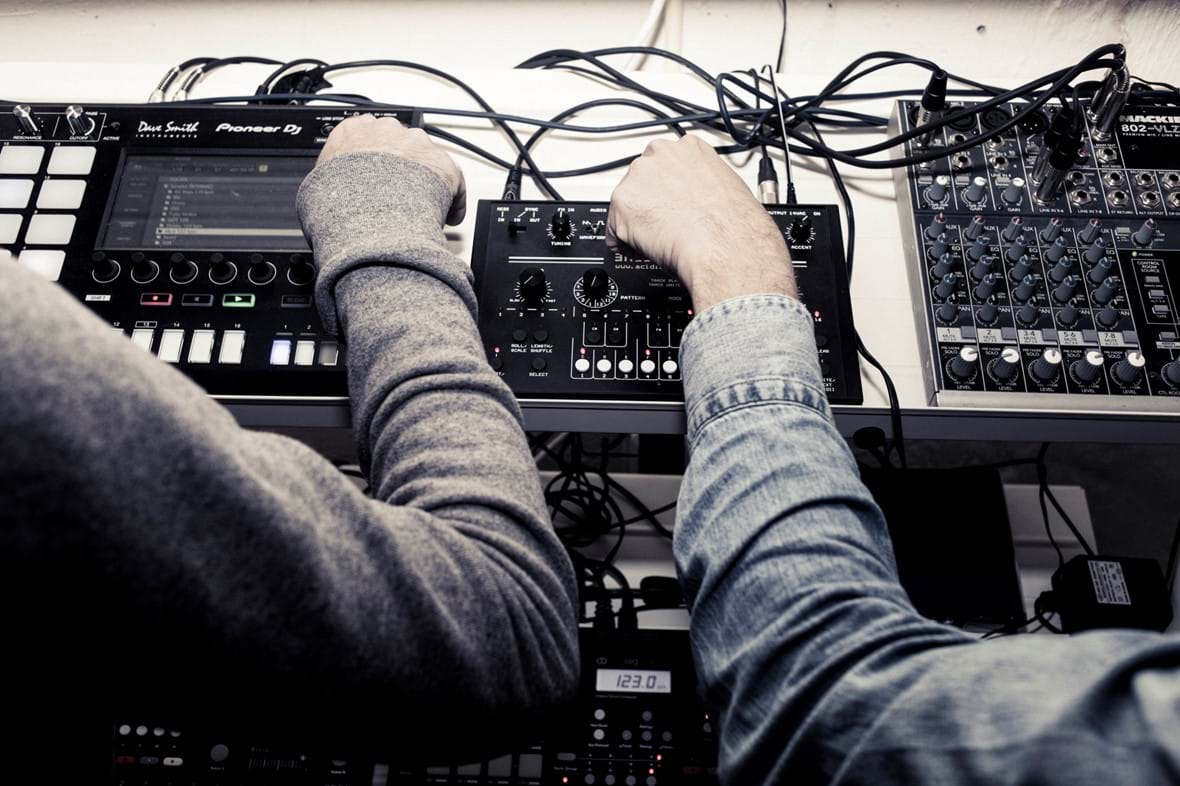
Leave your comfort zone. Try more, find different ways and challenge yourself. Whatever works for you, works.
Lars Dales, Detroit Swindle
Inspiration
Now that Detroit Swindle is a reality – and a huge success – how do you keep getting inspired? How does new musical ideas come to life?
“It can come from anywhere and at any time,” says Maarten. “Sometimes, you just hear this music and then there’s a little snippet or passage of something that is interesting and intriguing sonically. And that can make you wonder how it would sound if you sample it and slice it up or move it slightly. It can also be a more practical approach. For instance, if there is a certain emptiness in a track that you just know would be easy to sample and turn into something of your own.”
“It can also have to do with the situation and location,” Lars continues. “When you’re traveling a lot inspiration can easily strike and you develop some basic ideas just using a laptop and headphones while on a plane or in an airport lounge somewhere – ideas that we often take up again when we’re back in the studio. And now that we’re talking about the studio, I also like having a physical environment with a chill-out zone – a place that is really cozy which can also trigger inspiration.”
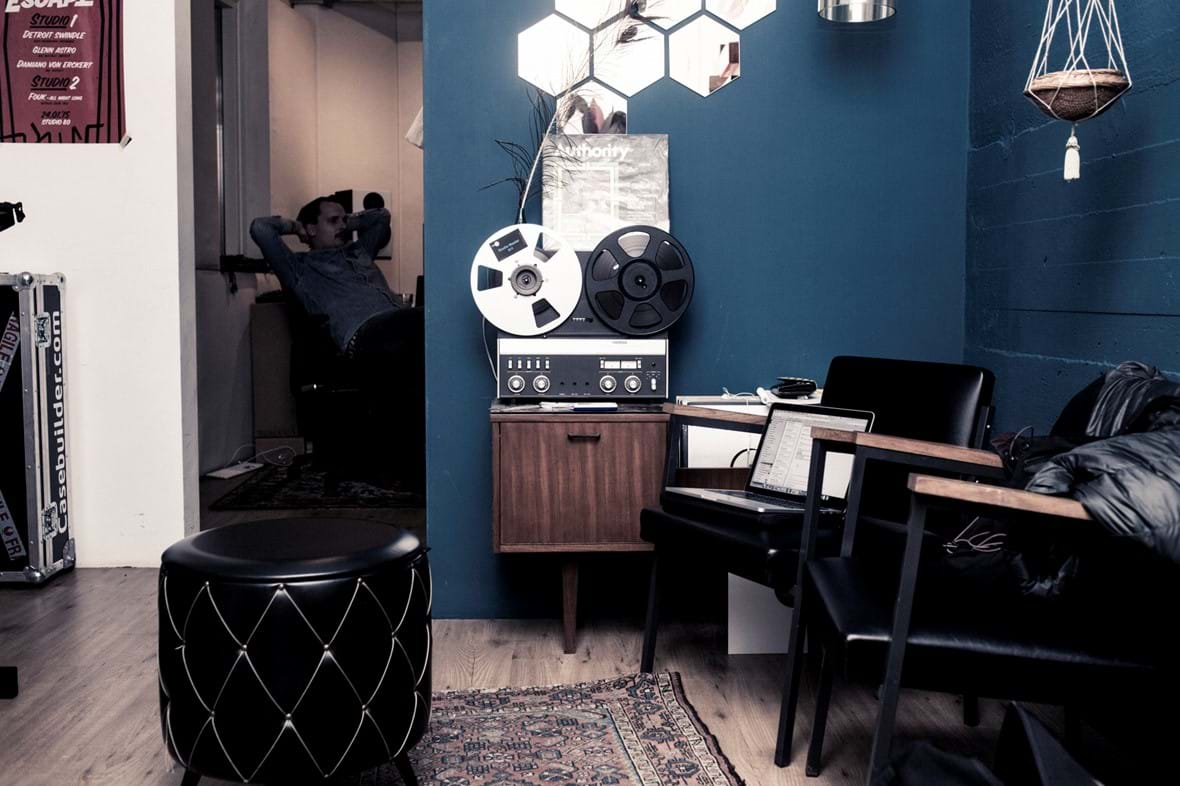
Creation
Speaking of studio work. We wondered what a typical Detroit Swindle day in the studio is like.
“Pretty much coffee comes first and then we turn on the machines,” according to Maarten. “But not all days are identical, of course. Some are about finalizing tracks we have been working on for a while and others are all about coming up with brand new ideas and concepts from scratch. Lars adds: “Some days, we also run into some physical limitations. We’re not instrumentalists, but we know what we want and if that happens to be a solo or something like that, which can take the track to the next level, we bring in the keyboard player we also work with for our live shows.”
So, once the creative process is on fire, how do you make decisions along the way? Is there a scientific or technical approach, or is it more based on emotions and a certain gut feeling?
Lars: “I would say that's really the difference between our personalities and maybe why we complement each other so well. Maarten is more of the ‘frequency’ guy who could be saying that we need something in this or that hertz area, whereas I have a more abstract approach.”
Maarten elaborates: “We also try to focus on the basic idea or concept. We tried working with a mix engineer once, but now we do it ourselves. We’re not experts just yet, but we know what kind of sound we want and just work our way towards it as we go along. I mean, if your idea is good, you can mix it into something that sounds great, but if your idea sucks, you can mix all you want and the actual result will never be great only because of good mixing. Sometimes, we even spend a lot of time to deliberately make it sound like a mix that was not done properly, because that might just be what fits the original idea the best. I am not sure it’s very scientific, but it’s definitely a conscious decision made along the way.”
We also wanted to know how Lars and Maarten make that final call: “Now the track is done!” It turns out there is usually one of two factors that come into play, according to Lars.
“Well, when we realize that we have come to the point where we’re tweaking just for the sake of tweaking, then we usually agree that the track is done. Oh, and sometimes a hard deadline also helps!”
Speaking of creativity, we caught a spontaneous Detroit Swindle jam during our visit.
If your idea is good, you can mix it into something great, but if your idea sucks, you can mix all you want and the result will never be great.
Maarten Smeets, Detroit Swindle
Motivation
So when you reach that point where you release tracks frequently and travel the world performing DJ sets with your own music, how do you stay motivated?
“I am confident that we haven’t made our best track yet,” says Maarten. “Yes, I agree. We started doing House music, but kept evolving. We are proud of our tracks, but we also feel that we can make even better ones and always try to move on and develop. For example, the sounds we use. In the beginning, we used only laptops, software and controllers, but over the years we bought a lot of hardware and found that these tools are so much more interesting to create new stuff with. Before, you may have had an idea and then tried to create it with the computer, but now it’s more like getting started with a hardware synth and get inspired by that. Then comes the idea and it is often one you could have never ‘thought up’ beforehand. All of those things – knowing that the journey is still ongoing – are part of what keeps up the motivation,” Lars adds.
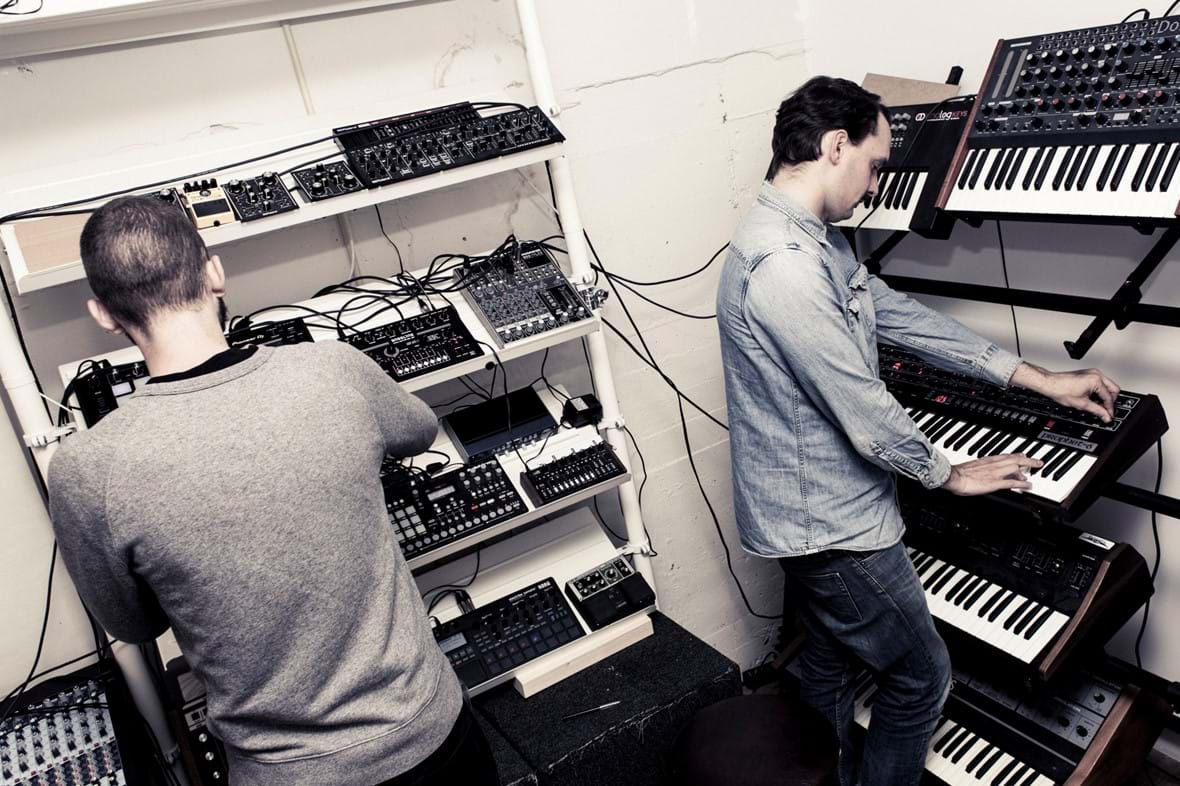
Technology and Gear
The world of technology is a fast-paced one, and we wanted to learn more about how this has affected Lars and Maarten’s way of working over the years.
“We actually started out with Ableton’s early versions of the Live software that made sampling so much easier,” says Maarten. “We sometimes joke that we should have been around 15 years earlier to have experienced the whole uprise of House music, but if that would have been the case, we wouldn’t have had the tools to do what we do now, so technology has been really important to us. On the other hand, it has also been really frustrating, as having access to many tools also requires them to integrate – and MIDI sync can really be a bitch!”
Ableton Live is also a crucial tool for Studio Master, Axel Boman.
With great monitors, certain boundaries disappear and your creative juices flow more easily.
Maarten Smeets, Detroit Swindle
And how about monitoring? What does good monitoring mean to Detroit Swindle?
“An honest and neutral sound,” says Lars. “We used various monitors back in the day that colored the sound slightly, yet in different ways. And then you send off your pre-master to be released thinking it’s nailed, but when you hear the track in a club, all of a sudden you go like ‘What!? Where did all those mids come from, or where did all the highs go?’ The better monitors we buy, the better our mixes get. You can just hear more details in the final mixes.”
Maarten elaborates: “Also, when you’re jamming to get inspired you need some monitoring power to be able to feel the music and get into the right vibe. I mean, we’re making music that is supposed to be played at clubs. So where I’m getting at is that if you have a great monitor setup that you can crank up without sounding bad, you can get into that clubby vibe, get enthusiastic and you simply start experimenting more. Certain boundaries disappear and your creative juices flow more easily. But having said that, once we get to the mixing stage, we often go a very low volume and then it is extremely important that you still get a very accurate sound reproduction. For instance, we often use that old trick of turning it almost all the way down to immediately identify if certain parts are ‘sticking out’ in the mix.”
Learn More About our LYD Series of Personal reference Monitors...
What about hardware synths. What was the first one and which are the favorites today?
“Well, my first hardware synth was a Dave Smith Mopho monophonic bass line synth,” says Maarten. “But I quickly realized that I didn’t have the knowledge to really use it and get the most out of it. So it got stacked away for a while and once we had learned more about how to use synths, we brought it back out and now we actually use it as the bass synth for most of the tracks in our live sets. Oh, and we also bought the Korg Mono/Poly very soon after we got started, and the Crumar Performer is amazing, too. It is not a versatile synth, but it is amazing for strings and brass sounds.”
Lars adds two synths to the list – one ‘tough love’ and one ‘true love’: “The Moog Voyager was ‘tough love’ for us, as it broke down a few times in the beginning, but if we should name a synth that we have fallen in love with for real, it would be the new version of the Prophet. It just sounds so good. Fat and warm!”
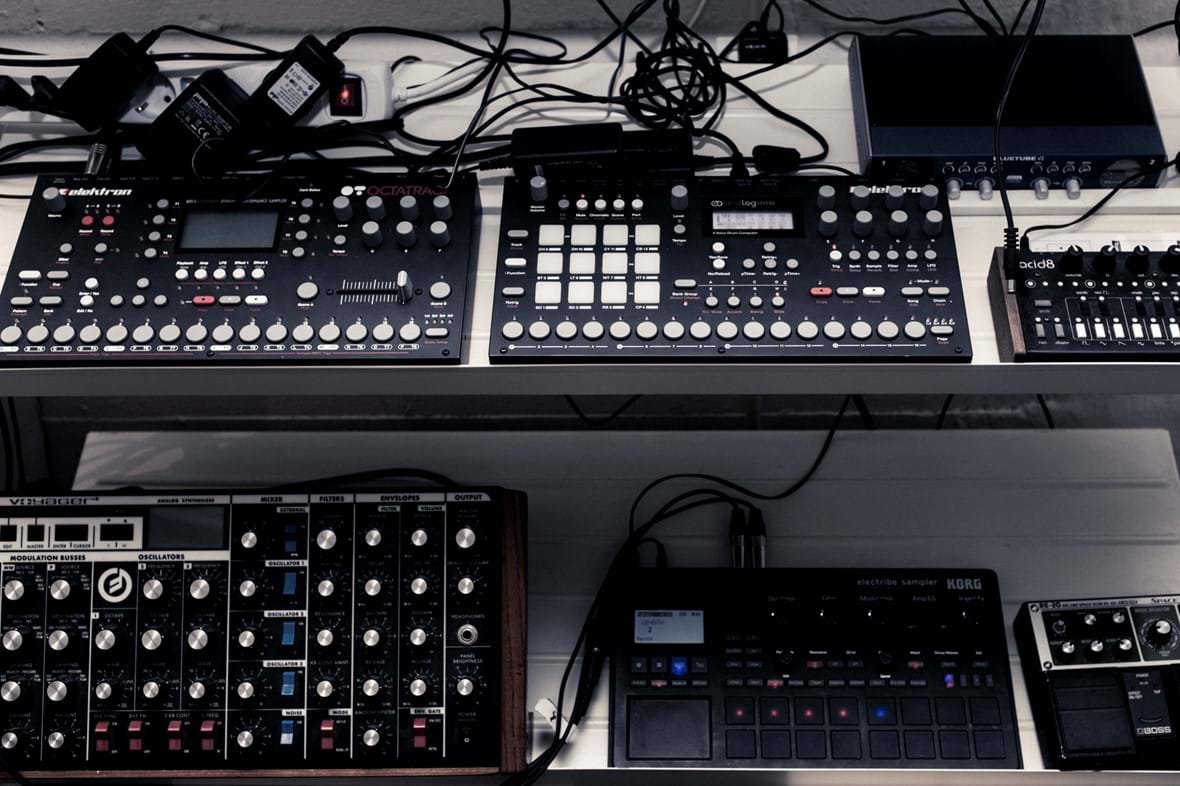
Tips & Tricks
To wrap up our meeting with Lars and Maarten, we wanted to pick their brains a bit for some tips and tricks for the upcoming generation of electronic musicians.
To Maarten, there is one thing above all that you should keep in mind: “Be authentic.”
Lars goes on and elaborates a bit on that thought: “Yes, and try not to be too comfortable in what you think is right at the moment. Just try more, find different ways and challenge yourself as much as you can. And remember that whatever works for you, works. There is this kind of snobbish trend today that you must use these vintage pieces of gear and spend thousands of euros on a 909 (Roland TR-909 drum machine, ed.), but in reality some of our best tracks were made with just a laptop, so there is not just one way to do it. The important thing is to be original and try not to copy what has already been done.”
This comment triggers a few additional advices from Maarten: “There can be magic in a machine, but ultimately it comes from within and if you need a certain piece of hardware to get that magic out, it’s fine. If you can get it out only using a laptop and software then that’s fine as well. But regardless, there is one thing you should do: Make sure to connect everything you use in a way so you can execute your ideas without having to mess around with the technical stuff. Invest time in setting up your gear in a flexible way so you don’t have to stop to hook up a machine or change cables when inspiration hits you. Do whatever it takes to be able to stay in the flow when you’re playing!”
Do whatever it takes to be able to stay in the flow when you’re playing!
Maarten Smeets, Detroit Swindle
Record Label Tips
Finally, since Maarten and Lars is also running their own label, we wanted to hear if they had any tips on how to approach that side of the music business.
“In the digital age it’s so easy to create a label. Just make a track and set up a sales channel on Beatport and all of a sudden you’re a releasing artist with your own label, but in reality that in itself will not get you anywhere,” says Maarten. “For us, it’s all about curating all the demos we get sent every day and build a certain musical profile and sound with just a few artists that we think are super cool.”
Lars continues: “Yes, but it is also a lot of hard work because it’s so easy to make tracks now and too much of what we receive is just too generic. I think the threshold needs to be higher and because of that I am sure that a few good tracks also slips through without being noticed because they simply drown in the flood of new tracks. So basically, don’t do it until you’re really certain that you know exactly what you want to achieve and what the profile should be like.”
Maarten agrees and emphasizes the important role you play as a label owner: “You simply have the responsibility not to suck! The only reason for people to follow your label is if you curate your content extremely well and that is not something that should be taken lightly.”
Ultimately, Lars sums it up to a single advice when it comes to starting your own label: “If you are a beginning artist, don’t start a label as the first thing you do. Instead, dive into the world of existing labels, send out promos and find out how unique you really are and how to navigate this landscape. Eventually, when you become an established artist that is when you might consider starting your own label.”
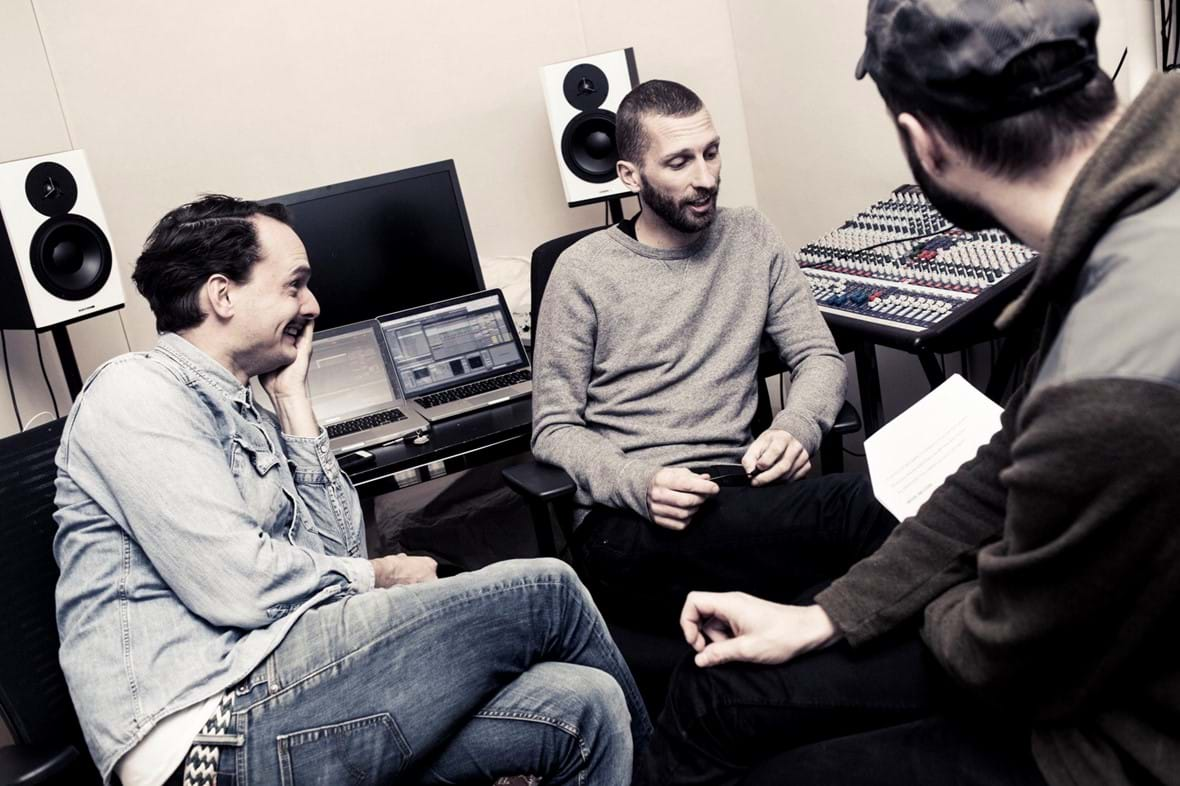
If you are a beginning artist, don’t start a label as the first thing you do. When you become an established artist that is when you might consider starting your own label.
Lars Dales, Detroit Swindle
Well, to us this was a great session with a couple of super-unique and interesting guys – musically, sonically and in terms of deciphering the world of labels and the electronic music business. With that in mind, it would make sense to punch out with the latest Detroit Swindle upload to their Soundcloud channel:
Red Light Radio | Stevie Wonderland (9 November, 2016). Enjoy!
Sign up to get more great articles
Nothing compares to the satisfaction of knowing – for a fact – that something is as good as it gets


